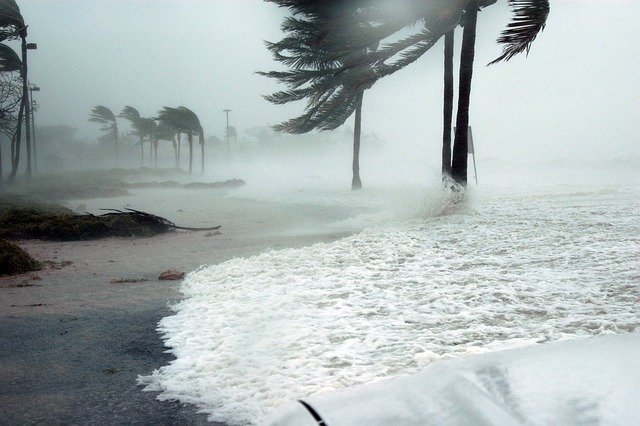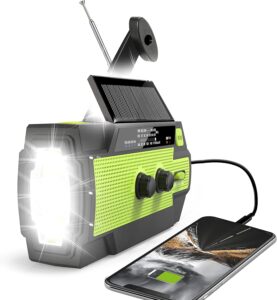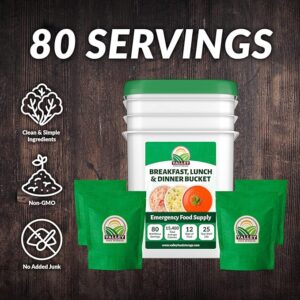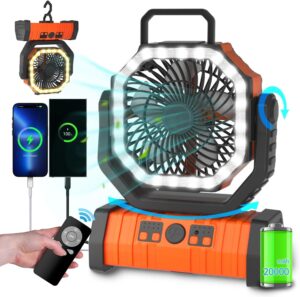
Surviving a Hurricane and the Aftermath: Essential Tips to Keep Your Family and Pets Safe
Hurricanes are upon us, nature’s most destructive forces, leaving devastation in their wake.
The safety of your family and pets during a storm, as well as in the days following, should be your top priority.
By preparing in advance, staying informed, and taking practical steps, you can minimize risks and ensure the well-being of your loved ones.
In this guide, we’ll walk through essential tips to help you survive a hurricane and its aftermath, with specific attention to keeping your family and pets safe.
Understanding the Threat
How to Stay Informed About Hurricanes
Staying informed is your first line of defense in preparing for a hurricane. With storms potentially changing direction or intensity at any time, it’s critical to stay updated using reliable sources.
Where to Get Accurate Hurricane Information:
- NOAA Weather Radio: Stay tuned to the National Oceanic and Atmospheric Administration (NOAA) weather radio for real-time updates.
- Local News Stations: Watch your local news for information on the storm’s path, evacuation orders, and shelter locations.
- Weather Apps: Download a trusted weather app (e.g., The Weather Channel, AccuWeather) for push notifications about approaching storms.
- FEMA Alerts: Sign up for FEMA’s wireless alerts to receive warnings directly to your phone.
Key Points:
- Stay aware of evacuation routes before a storm hits.
- Bookmark official websites (such as NOAA and FEMA) for real-time hurricane updates.
- Monitor the situation frequently in case the hurricane’s trajectory changes.
Before the Storm Hits
Hurricane Preparedness Checklist for Families and Pets
Once a hurricane watch or warning is issued, it’s essential to get your family and pets prepared.
The time to gather supplies and make emergency plans is well before the storm arrives.
Essential Supplies for Families:
- Non-perishable food (enough for 3-7 days).
- Water (at least one gallon per person per day).
- First aid kit with any necessary prescription medications.
- Flashlights and batteries (consider a hand-crank flashlight as a backup).
- Battery-powered radio for emergency alerts.
- Personal hygiene items, including hand sanitizer, toilet paper, and sanitary products.
- Cash (ATMs and credit card machines may be down).
- Extra clothing, blankets, and sleeping bags.
Essential Supplies for Pets:
- Pet food (enough for 3-7 days).
- Collars, leashes, and carriers to keep pets secure.
- ID tags or microchips to ensure you can locate lost pets.
- Medications and a pet first aid kit.
- Comfort items (blankets, toys) to reduce stress.
- Litter box and waste disposal supplies for cats.
Evacuate or Shelter in Place
What to Do When the Hurricane Strikes
Depending on your location and the severity of the storm, authorities may issue evacuation orders. Knowing when to evacuate versus when to shelter in place is crucial to your safety.
Making the Decision to Evacuate:
- Follow local authorities: If evacuation is ordered, do not hesitate. Waiting can trap you in dangerous conditions.
- Plan your route: Know the safest evacuation routes ahead of time, and avoid areas prone to flooding.
- Prepare your pets: Secure pets in carriers, and take them with you. Never leave them behind, as shelters often accept pets in emergencies.
Sheltering in Place:
- If evacuation isn’t possible or required, you must ensure your home is a safe place to ride out the storm.
Steps to Shelter Safely:
- Move to an interior room: Stay away from windows, doors, and skylights. An interior bathroom or closet is often the safest.
- Use mattresses or heavy blankets: If the storm intensifies, cover your family and pets with mattresses to shield them from debris.
- Keep pets secure: Ensure your pets are in a safe, confined space. Cats may be more comfortable in carriers, while dogs should stay in a secure, enclosed area.
Protecting Your Home and Family During the Storm
The safety of your home environment is a critical component of hurricane preparedness. Taking steps to protect your property reduces the likelihood of damage and increases your family’s safety during the storm.
How to Prepare Your Home:
- Board up windows or use storm shutters to prevent glass from shattering.
- Secure outdoor items: Bring in patio furniture, plants, and anything else that could become a projectile in high winds.
- Turn off utilities: If instructed by authorities, turn off electricity, gas, and water to avoid potential hazards.
- Fill your bathtub with water to have a clean water source for washing and flushing toilets in case of a power outage.
- Unplug electronics: Prevent power surges by unplugging TVs, computers, and other electronics.
Family and Pet Safety Tips During the Storm:
- Keep everyone, including pets, in the same room so they are easy to account for.
- Avoid using candles during the storm. Instead, use battery-powered flashlights to reduce the risk of fire.
- Regularly reassure children and pets during the storm to keep them calm.
After the Storm
Staying Safe in the Aftermath
The danger doesn’t end when the storm passes. The aftermath of a hurricane can present significant hazards. Here’s what you need to know to stay safe once the winds die down.
Post-Hurricane Safety Tips:
- Wait for the all-clear: Do not leave your home until local authorities confirm it is safe.
- Assess structural damage: Check your home for damage, such as roof issues or broken windows, before re-entering.
- Avoid downed power lines: Always assume a downed line is live, and report it immediately.
- Beware of floodwaters: Flooding may carry dangerous debris, bacteria, and chemicals. Avoid walking or driving through standing water.
- Inspect food supplies: If the power was out for an extended period, discard any perishable items that have been unrefrigerated.
Pet Safety Post-Hurricane:
- Keep pets leashed or contained when outdoors, as they may be frightened or disoriented by the storm.
- Check pets for injuries, and contact a veterinarian if necessary.
- Be cautious of allowing pets to drink floodwater, as it may be contaminated.
Coping with Power Outages
Keeping Everyone Comfortable
Power outages are common after a hurricane. You’ll need to take steps to ensure your family and pets are comfortable and safe without electricity.
Managing Without Power:
- Food safety: Keep the fridge closed as much as possible. Refrigerated food is safe for about four hours, and frozen food can last 24-48 hours in a full freezer.
- Cooling or heating: In warm climates, ensure good air circulation using battery-powered fans or open windows when safe. In cold climates, layer clothing and use blankets to conserve body heat.
3. Entertainment: Keep children and pets entertained with non-electronic games, books, or puzzles to ease their anxiety during the outage.
Mental and Emotional Wellbeing
Helping Your Family and Pets Recover
In the wake of a hurricane, it’s not uncommon for families and pets to experience stress and trauma.
Taking steps to address emotional recovery is just as important as ensuring physical safety.
Helping Children Cope:
- Encourage them to talk about their feelings. Reassure them that it’s okay to feel scared or upset.
- Maintain routines as much as possible to provide a sense of normalcy.
Helping Pets Cope:
- Pets may experience anxiety due to loud noises, disruptions, or changes in their environment.
- Create a calming space for your pet using their favorite toys and blankets.
- Consider consulting a vet if your pet shows signs of trauma or distress, such as excessive barking or hiding.
Conclusion
Surviving a hurricane and its aftermath requires careful planning, quick decision-making, and a focus on safety.
By following these tips, you can protect your family and pets from harm while navigating through the storm and the recovery process.
Remember, preparedness is the key to weathering any storm, so don’t wait for the next hurricane to start planning.
Encourage your neighbors and loved ones to make their plans, share this guide with them, and take comfort in knowing that by preparing today, you’re ensuring a safer tomorrow for your family and pets.
Sources:
NOAA – National Oceanic and Atmospheric Administration. “Hurricane Preparedness: Be Ready for a Hurricane.” NOAA.gov, https://www.noaa.gov.
(Cited in sections discussing hurricane alerts, real-time updates, and preparedness tips.)FEMA – Federal Emergency Management Agency. “Hurricane Safety Tips.” Ready.gov, https://www.ready.gov/hurricanes.
(Cited in sections covering evacuation plans, post-hurricane safety, and power outage management.)The American Red Cross – “Hurricane Preparedness Checklist.” RedCross.org, https://www.redcross.org.
(Cited for essential supply lists, family emergency kits, and pet safety during hurricanes.)ASPCA – American Society for the Prevention of Cruelty to Animals. “Disaster Preparedness for Pets.” ASPCA.org, https://www.aspca.org/pet-care/general-pet-care/disaster-preparedness.
(Cited for specific pet-related safety tips and supplies to have on hand during a storm.)CDC – Centers for Disease Control and Prevention. “Hurricanes: Health and Safety Tips.” CDC.gov, https://www.cdc.gov.
(Cited for safety precautions after a hurricane, including assessing floodwaters, downed power lines, and food safety.)
If you live in an earthquake zone, this guide is for you.


